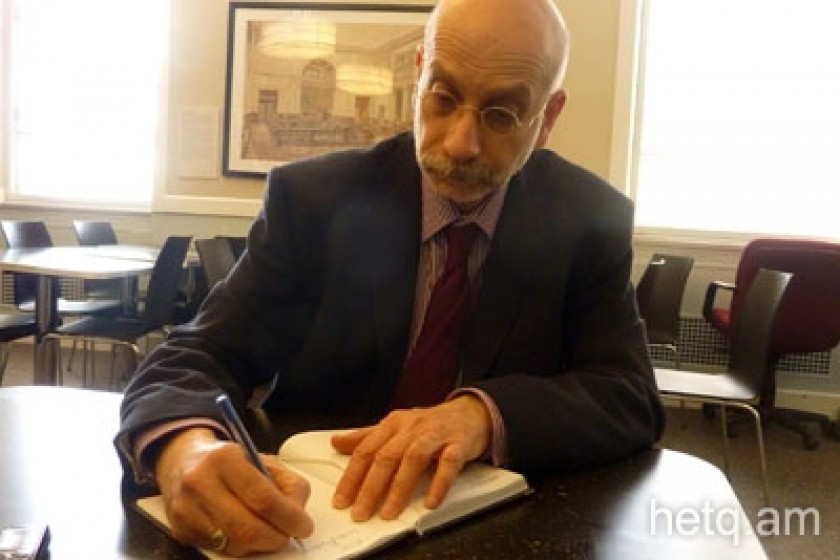
Armenian Specialist at Library of Congress: "Who'll replace me when I retire?"
Dr. Levon Avdoyan has been diligently working away at the U.S. Library of Congress since 1992.
His current position is Armenian and Georgian area specialist in the Near East Section of the African and Middle Eastern Division. He fears that after retiring, there’ll be no one to replace him.
Avdoyan was born in the U.S. “I’m half Armenian and half American. I am not able to help Armenians if I’m not a good American,” he says.
“Only by saying ‘long-live Armenia’, it’s impossible to move forward. I’m a historian first and foremost. Maybe I don’t work in the Armenian style, but when I speak, the level of confidence is much greater,” Avdoyan says.
He has three Masters Degrees (Art, History and Philosophy) from Columbia University in New York and received his PhD. in ancient and Armenian history under the supervision of Nina Garsoian. He spent 1972 studying in Armenia at the Matenadaran Repository for his PhD.
Avdoyan has been back to Armenia several times since then and plans to return in August. He says he wants to visit Sanahin, Haghpat and other historical sites he's only read abou.
On April 19, the Library of Congress will open an exhibition, "To Know Wisdom and Instruction: The Armenian Literary Tradition at the Library of Congress". Dr. Avdoyan, the curator for the exhibition, has also compiled an accompanying catalog that will be available in bookstores and the Library’s website.
The exhibition marks the 500th Anniversary of the Armenian Literary Tradition. In 1512, Hakob Meghapart (Jacob the Sinner) opened an Armenian Press in Venice, Italy, and published an Armenian religious book, "Urbatagirk" (the Book of Fridays). The era of Armenian printing had begun.
The exhibition will remain on view through Sept. 26. Drawing from the Armenian collections of the Library of Congress, the exhibition will display the varieties of the Armenian literary tradition from the era of manuscripts through the early periods of print and on to contemporary publishing.
Dr. Avdoyan told me that the Library possesses some 45,000 Armenian related items of which 16,300 are in Armenian. They started out with 7,000.
These include the papers and documents of U.S. Ambassador to the Ottoman Empire Henry Morgenthau, the papers of Rouben Mamoulian, films, music and a wide assortment of other items including 35 manuscripts. The collection goes up to the 19th century.
Dr. Avdoyan says that the Library of Congress is a true research library but that there are few who avail themselves.
“We get people from Armenia, Israel and France, but there are more tourists visiting us than scholars.”
He said that the exhibition to be launched in a few days is very important for several reasons.
“For one, it will present a whole new aspect regarding Armenians. We want to show that Armenians have an ancient culture that survives today. Armenians are more than just the first Christian nation or a people victimized by genocide. Then too, we want to show the world that the Library of Congress has such a rich Armenian collection.”
One question concerns Dr. Avdoyan – who if anyone will replace him when he eventually retires.
“When I started working here the Library had 5,200 employees. Due to budget cuts, that has dropped to 3,200. I suspect that no one will replace me when I leave. The Middle East section won’t close and the books will remain. But I don’t know who will continue to collect Armenian materials. That person will have to know Armenian.”
 Videos
Videos Photos
Photos




Comments (2)
Write a comment